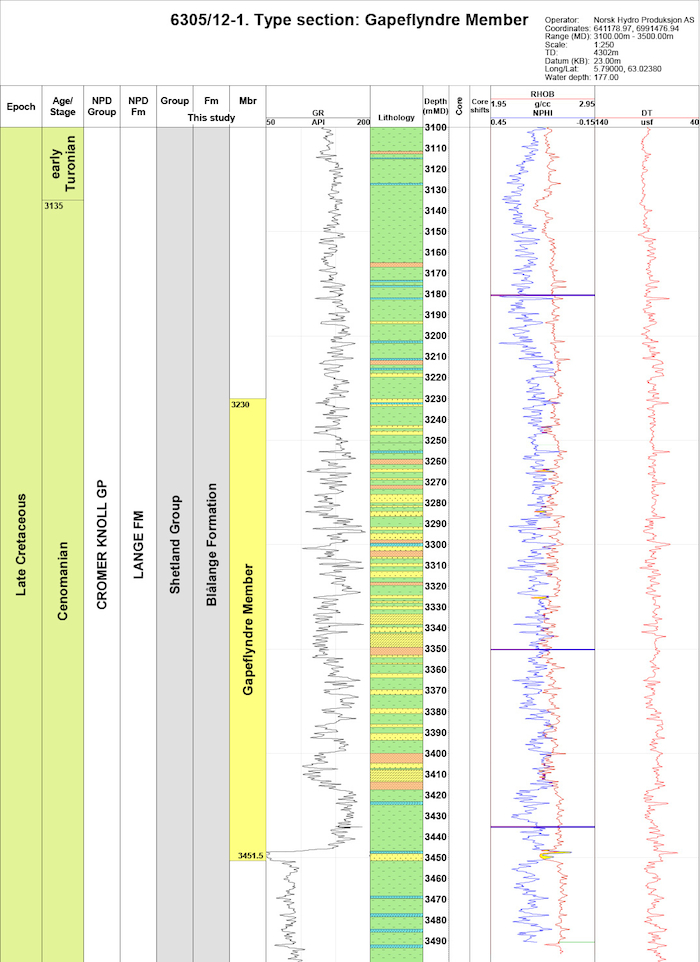Gapeflyndre Member [new]
updated to follow: Stratigraphic Guide to the Cromer Knoll, Shetland and Chalk Groups of the North Sea and Norwegian Sea. Felix M. Gradstein & Colin C. Waters (editors), Mike Charnock, Dirk Munsterman, Michelle Hollerbach, Harald Brunstad, Øyvind Hammer & Luis Vergara (contributors). Newsletter on Stratigraphy, vol 49/1 pp71-280, 2016
Shetland Group,
Blålange Formation
Name
Derivatio nominis: Norwegian for the American plaice or sole,
Hippoglossoides
platessoides. Appropriately, this fish is found on soft bottoms,
most often in water
depths of 90-250m in the North Atlantic region including the Norwegian Sea.
Informal name: Lange sandstones.
Lithology
Interbedded sandstones, siltstones and mudstones. The sandstones
frequently contain glauconite or kaolinite. Not cored in the type well.
Thickness
The gross thickness of the member is 221.5 m in the type well.
Geographical distribution
This member is attributed to the Blålange Formation (Shetland
Group) and found in the Slørebotn Sub-basin, on the eastern Møre margin.
Type well
Well name: 6305/12-1
WGS84 coordinates: N 63°1'25.73", E 05°47'23.94"
UTM coordinates: 6991476.94 N 641178.97 E
UTM zone: 31
Drilling operator name: Norsk Hydro Produksjon AS
Completion date: 18.09.1991
Status: P & A
Interval of type section (m) & thickness in type well: 3451.5 m - 3230 m, 221.5 m thickness.

Reference wells
None designated.
Well log characteristics
The member shows an irregular and serrate GR log profile and a series of cleaning-upward
profiles that probably represent repeated sandstone input.
Upper and lower boundaries
Upper boundary
The upper boundary is more difficult to define due to the progressive
decrease in the frequency of sandstone interbeds.
Lower boundary
The lower boundary of the Gapeflyndre Member is characterised by negative
separation between density and neutron porosity logs defining the
development of sandstones above a predominantly mudstone interval and is
well defined on both gamma ray and sonic logs.
Age
Late Cretaceous, Cenomanian.
Depositional environment
Deep marine.
Core is lacking but based on log character and location within the Slørebotn sub-basin,
the member is considered to be a series of interbedded basin mudstones/mud-dominated
turbidites and lobe fringe or interlobe overbank turbidite sandstones.
Remarks
A possible 'Blodøks Formation Equivalent' was noted by the Operator in the type well 6305/12-1 above this member between 3140m-3158mMD. An equivalent of the Gapeflyndre Member is recognized in the 6205/3-1 R well (2925m-2973m). This well is located in a more basinal position and the lithology dominated by siltstones.

